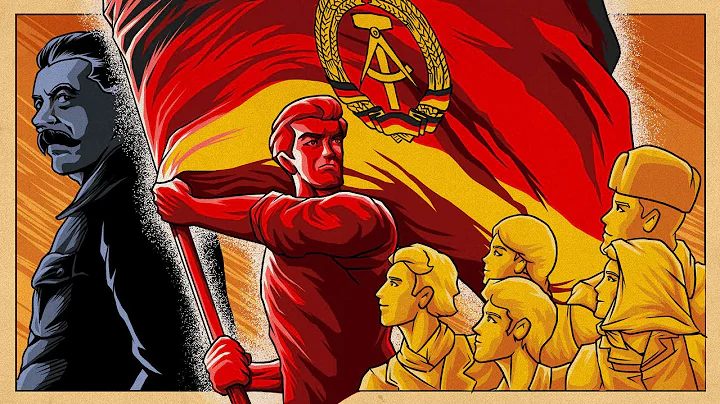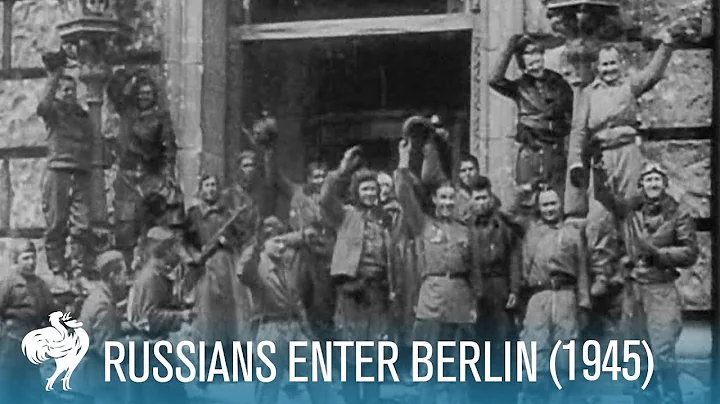At the end of World War II, the Soviet army took the lead in invading Berlin on the Eastern Front and occupied the entire territory of Berlin. Allied forces on the Western Front also entered German territory.

Soon after World War II, a new world pattern took shape. The formation of a bipolar pattern between the US and the Soviet Union. With the continuous intensification of the Cold War situation, the German capital Berlin was divided into East Berlin and West Berlin after World War II. In order to isolate the East German people from contact with West Germany, East Germany moved along the border in its own territory. A wall was built up to enclose West Berlin. The establishment of the Berlin Wall was an important landmark for the division of Germany and the Cold War after World War II. On November 9, 1989, the 28-year-old Berlin Wall fell and the two Germanys were reunited. This is the famous Berlin Wall, the forefront of the war between Warsaw Pact and NATO. It is a product of the Cold War period. So, in the latter part of World War II, the Soviet army completely occupied Berlin, and Germany was also occupied by divisions. During the Cold War, Germany was divided into two, but why was Berlin divided into two in East Germany? Shouldn't they all be occupied by the Soviet Union? Let us introduce the situation at that time.

Berlin is geographically located in East Germany. Because it is the capital, it has the embassies and occupied areas of the United States, Britain and France. When Germany was divided, because Berlin had certain western countries, the capital was also divided independently, rather than all belonging to East Germany.

After the Allies occupied Germany in 1945, Germany and Berlin were divided into four regions by the Soviet Union, the United States, Britain and France. In 1949, the German Democratic Republic (East Germany or Democratic Germany for short) was established in the occupied areas of the Soviet Union, including East Berlin. The capital was set in East Berlin, while the Federal Republic of Germany (West Germany or Federal Germany for short) was established in the occupied areas of the United States, Britain and France. Set in Bonn until the reunification of the two Germanys. The occupation agreement between the United States, Britain, France and the Soviet Union guarantees an air corridor between West Germany and West Berlin. West Berlin’s laws in West Germany and the West Berlin Basic Law stipulate that it is the territory of West Germany. Since West Berlin’s territory is entirely within East Germany, the Soviet Union forced West Germany to abandon West Berlin and forced West Berlin to cut water and food. This move united Western countries. Unanimously, there are multiple flights daily to transport materials from West Germany to West Berlin. NATO was established in April 1949, and the Soviet Union lifted the blockade in May 1949. However, the three countries of the United States, Britain and France believed that the regulations were in conflict with the status quo and postponed their implementation. Therefore, West Berlin has not been the territory of West Germany until the end of the Cold War and the reunification of Germany.

Initially, the citizens of Berlin were able to move freely between the districts, but as the tension of the Cold War increased, in order to prevent East Germans from fleeing to West Germany, which caused a serious shortage of workers in East Germany, the border between East and West Berlin began to be closed in 1952. From 1949 to 1961, approximately 2.5 million East Germans fled into West Berlin at the risk of being shot by the East German border.

The construction of the Berlin Wall began on August 13, 1961. It was originally a barbed wire fence, but was later replaced by a large number of real walls. East Germany calls this wall an "anti-fascist defense wall", but most Western countries believe that the real purpose of building the wall is to prohibit East Germans from fleeing into West Berlin.

After the wall was established, some people used jumping, digging tunnels, swimming, etc. to cross the Berlin Wall. A total of 5,043 people successfully escaped into West Berlin, 3221 people were arrested, 239 people were killed, and 260 people were injured.

On August 17, 1962, 18-year-old East German Peter Fechar tried to climb the fence and was shot and killed by East German soldiers. At that time, Western reporters were present, and people on both sides of the East and West saw him shot, but no one helped. The incident was a sensation during the Cold War. He became the first person to be shot for trying to climb a wall.
On June 12, 1987, US President Reagan delivered the famous "Tear Down This Wall!" speech at the Brandenburg Gate, suggesting that Soviet leader Gorbachev tear down the Berlin Wall.

On November 9, 1989, the new East German government began to plan to relax travel restrictions on the people of East Germany. However, due to the misunderstanding of the orders of the higher authorities by Günter Shabowski, a member of the Politburo of the East Germany at that time, the Berlin Wall was falsely declared It is about to open, causing tens of thousands of citizens to take to the streets and demolish the walls. The whole of Germany is in a state of extreme excitement. This event is also known as "The Fall of the Berlin WallAlthough the wall was not collapsed by its own structure, it was demolished manually. At that time, Berliners climbed the Berlin Wall, graffitied it, and removed building materials as souvenirs. 11 months later, the two Germanys were finally unified and became the “Berlin Wall”. The culmination after the collapse.

The fall of the Berlin Wall is considered by historians to be a sign of the end of the East-West Cold War and the reunification of East-West Germany. On October 3, 1990, the German Democratic Republic (East Germany) joined the Federal Republic of Germany, Germany and The reunification of Berlin was completed. The roads, railways and bridges of East and West Berlin were quickly connected after the wall collapsed. After the reunification of the two Germanys, although the Berlin Wall no longer exists, there are still countless other obstacles. West German capitalism swept East German enterprises , Causing millions of East Germans to lose their jobs. East Germans think West Germans are greedy, West Germans think East Germans are lazy and lazy. This phenomenon is also reflected in the social and economic phenomenon between East Germany and West Germany.

Today, there is still a small section of the wall remains in Berlin as a memorial and historical testimony, which continues to attract a large number of tourists to visit. The checkpoint of the Berlin Wall was originally a passage between East and West Berlin. Now a wall museum is built next to it.









![Battle of Berlin 1945 - Nazi Germany vs Soviet Union [HD] - DayDayNews](https://i.ytimg.com/vi/SgHWSJBlnas/hq720.jpg?sqp=-oaymwEcCNAFEJQDSFXyq4qpAw4IARUAAIhCGAFwAcABBg==&rs=AOn4CLBpSGvWGCNMWXcIfifgrbOnbLcqnA)











